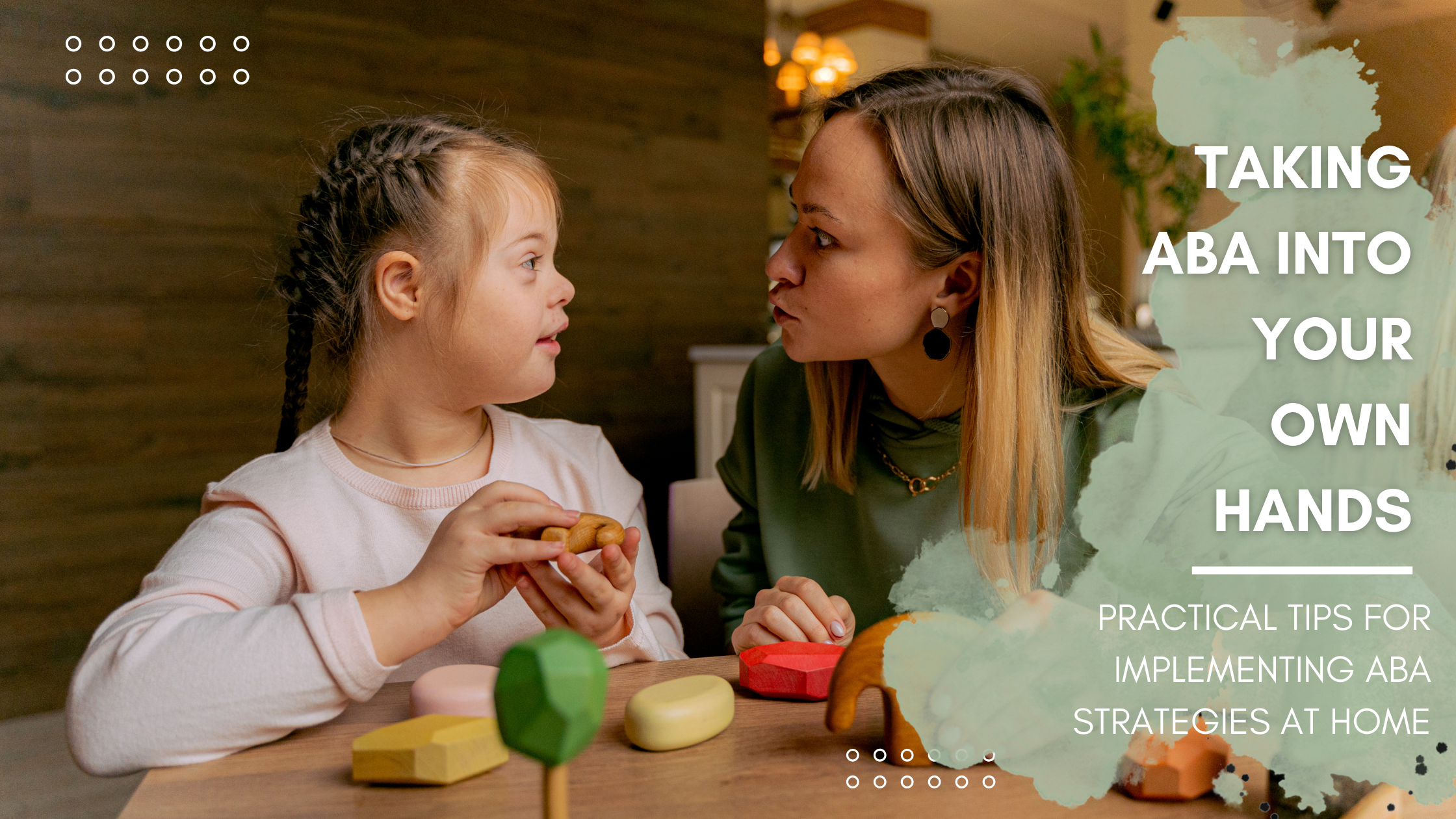Taking ABA into your own hands: Practical Tips for Implementing ABA Strategies at Home
April 11, 2025

ABA therapy doesn’t have to end when your child leaves the clinic or finishes a session with their BCBA. In fact, some of the most meaningful progress happens right at home, where children feel most comfortable. The key is integrating ABA strategies into your daily routine in a natural, enjoyable way.
1. Consistency is Key
Just like how plants need sunlight and water, ABA strategies need consistency to thrive. Collaborate with your BCBA to ensure you’re using the same prompts, reinforcement strategies, and expectations at home that your child is experiencing during therapy. Consistency helps reinforce desired behaviors and creates a predictable environment that feels safe and supportive.
2. Use Positive Reinforcement (And Get Creative!)
Positive reinforcement is a staple of ABA therapy. It’s all about rewarding desired behaviors to encourage them to happen more often. But here’s the fun part: Get creative with your rewards! If your child loves dinosaurs, offer a dinosaur sticker every time they complete a task. If they adore music, a mini dance party can be a fantastic reinforcer. Find what works best for your child and keep it exciting.
3. Break Tasks into Manageable Steps
If a task feels overwhelming, break it down into smaller, more manageable parts. Instead of expecting your child to clean their entire room, start with just putting toys into a bin. As they master smaller steps, gradually increase the complexity. This approach builds confidence and motivation.
4. Incorporate Learning Into Daily Activities
From brushing teeth to sorting laundry, everyday tasks offer natural opportunities for teaching and reinforcing skills. Practice communication by asking your child to name items or make requests during mealtime. Use playtime to encourage social skills, turn-taking, and following directions.
5. Celebrate Successes (Big and Small!)
Don’t wait for monumental achievements to celebrate. Every little victory is worth acknowledging. Whether it’s making eye contact, completing a task independently, or trying something new, positive reinforcement and genuine praise help keep motivation high.
6. Keep Things Fun and Flexible
Remember, progress doesn’t always look like a straight line. Sometimes, what worked yesterday might not work today—and that’s okay! Keep your approach playful and adaptable. Learning should feel enjoyable and engaging, not like a chore.
7. Maintain Open Communication with Your BCBA
Your BCBA is your co-pilot on this journey. Keep them in the loop about what’s working, what’s not, and any new challenges that arise. Regular communication helps refine strategies and ensures your child is receiving the most effective support possible.
Final Thoughts
Implementing ABA strategies at home doesn’t require you to be a professional therapist—it just takes patience, creativity, and a willingness to learn. The more you incorporate these strategies into your daily routine, the more natural and effective they become. And remember: You’re doing an amazing job.
Would you like a handy checklist to help you put these tips into practice? Stay tuned for a free downloadable resource!
